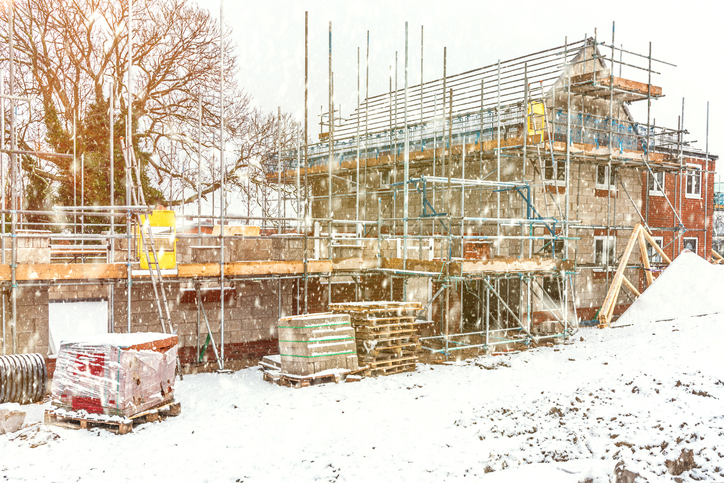Contrary to popular belief, construction doesn’t stop because it’s winter. It may slow down due to weather or a severe drop in temperature, but if they can, construction companies will continue working on the job. While safety is the first priority already on these sites, winter takes it to a whole new level. Workers need to keep themselves protected from the cold weather, especially if they’re working on a taller building. This could be from dressing appropriately, to removing ice, and much more. Here are a few ways to implement winter construction safety at all times.
- Dress For The Weather: Winter safety starts with clothes. On top of the safety gear like a hard hat, eye protection, and steel-tip non-slip boots, winter gear is just as important to prevent frostbite, slipping, and more. Each member should be wearing several layers to keep their bodies warm. The outer layer should be waterproof to keep out as much moisture as possible.

- Take Frequent Breaks: Similar to in the summer, frequent breaks are important during the winter. There should be a heated area where the workers can go inside to warm back up. It also gives them the opportunity to change their jackets if they’re wet. They can even check on their fingertips and toes for any signs of frostbite.
- Drink Plenty of Fluids: No matter what the weather is, staying hydrated is extremely important. Water is going to be first on the list but in the winter hot drinks are important as well. Caffeine-free coffee, tea, hot cocoa, or even just hot water throughout the day helps keep the body temperature regulated and reduces the risk of hypothermia.
- Remove Snow & Ice: Removing snow and ice from roofs, walkways, ladders, scaffolding, and other equipment is crucial for the safety of the workers. This will prevent slipping or other issues throughout the day.
- Inspect the Equipment: Look over the instructions for the equipment. Some may not perform well in the cold weather. If it’s used it could break or malfunction causing an injury. Instead, try to find a safer alternative to use.
- Check the Forecast: While it’s important to stay on schedule, the safety of the workers is first priority. If it’s snowing, sleeting, or even raining, you’re increasing the risk of their safety. There will be days when work will have to end early because of a storm rolling in or even the entire day.




